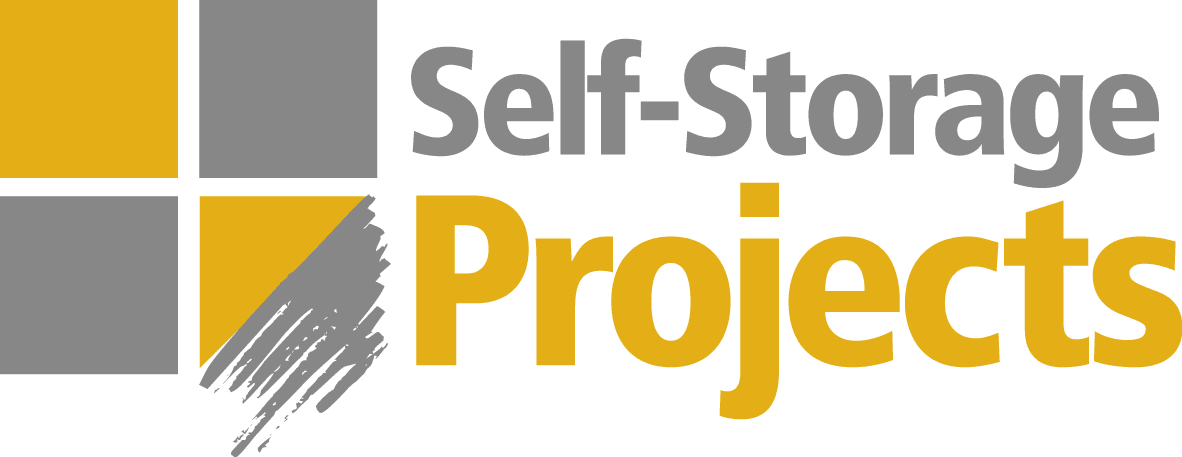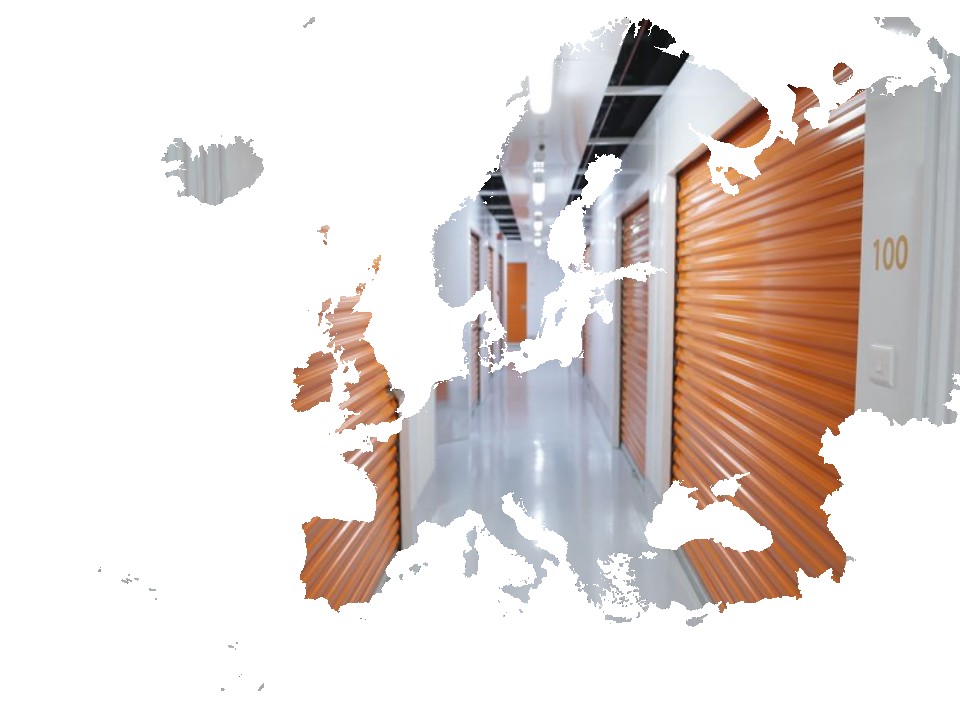When I started thinking about the implications of a renewed Trump presidency on the self-storage industry, tariffs had just been imposed—10% on imports from China, 25% on those from Canada, and similar measures affecting other trading partners. At the time, early executive orders signaled a shift toward protectionist economic policy, but the full impact remained to be seen.
Fast forward to April 2025, and the situation has intensified. Tariffs on Chinese imports have now surged to 145%, with Beijing responding in kind—raising tariffs on U.S. goods to 125%. Financial markets have reacted sharply, with trillions in value wiped out in recent weeks amid growing investor anxiety and the mounting unpredictability of policy coming out of Washington. The ripple effects are now being felt across global supply chains, construction markets, and investment flows.
The European Union has not been spared. In response to U.S. tariffs—including a 25% duty on steel and aluminum and a 20% tariff on a broad range of European goods—the EU approved retaliatory tariffs on $23 billion worth of U.S. products. These measures target items such as soybeans, motorcycles, and yachts, and are set to be implemented in stages throughout the year. While the EU has expressed a preference for negotiation, the escalating trade tensions have already begun to strain transatlantic economic relations.
For the self-storage sector, the implications are becoming clearer—but not necessarily simpler. While the industry has proven resilient in past downturns, this current period of economic turbulence, trade disruption, and monetary uncertainty presents a new kind of test. What began as a concern over rising construction costs or interest rates may now evolve into a broader reckoning with investor sentiment, capital availability, and long-term development strategies. The rest of this article explores how this shifting environment could reshape the trajectory of self-storage in both the U.S. and Europe—and what may lie ahead.
A Strong Market Meets Economic Uncertainty
The self-storage industry entered 2025 in relatively strong shape. In Europe, M&A activity surged in 2024, with transaction volumes reaching €875 million by the end of the year—triple the volume seen in 2023. An additional €546 million in pending deals suggests another record-breaking year is possible. Institutional investors have been particularly active, drawn by self-storage’s resilience amid high interest rates and an uncertain economic climate. In the US, despite economic headwinds, private equity and real estate investment trusts (REITs) continued to pursue acquisitions, albeit with more selective criteria.
However, with Trump’s policy shifts now in motion, the outlook for self-storage investment, development, and operations is evolving rapidly.
Capital Markets and Interest Rates: A New Dynamic for Investment
One of the biggest uncertainties facing the industry is how the Federal Reserve will respond to the administration’s trade policies. If tariffs push inflation higher, the Fed may be forced to maintain or even increase interest rates rather than pivot to rate cuts as some had anticipated. This would make financing for self-storage acquisitions and developments more expensive, potentially slowing down expansion plans. While liquidity remains available, the rising cost of capital is already forcing investors to reassess deal structures, with an increasing reliance on private debt, joint ventures, and sale-leasebacks.
In Europe, the effects of US policy may be more indirect but still significant. Many US-based funds have been active in the European self-storage sector, and a shift in capital allocation priorities—whether due to trade disputes, economic uncertainty, or higher US yields—could lead to a cooling of the recent M&A momentum. A survey by the American Chamber of Commerce to the European Union recently indicated that 90% of US firms operating in Europe expect transatlantic relations to deteriorate under the new administration, a factor that could further impact capital flows into European self-storage assets.
Development Costs and Supply Chain Disruptions
Tariffs on steel and aluminum imports are set to increase development costs for self-storage projects across all markets, as steel remains a core component of facility construction worldwide. Rising costs could impact both new builds and expansions, particularly for operators relying on prefabricated steel structures. Additionally, electronic components—essential for modern self-storage operations, including access control systems, kiosks, and AI-driven facility management—could also see price increases due to trade restrictions and supply chain disruptions. Beyond tariffs, broader geopolitical uncertainty—such as trade disputes between major economies, regional conflicts, and shifting diplomatic alliances—poses further risks to supply chain stability. Delays in material shipments, fluctuating costs, and restricted access to key technologies could complicate project timelines. Operators and developers who planned expansions under the assumption of stable material costs may now face budget overruns or project delays, requiring more flexible sourcing strategies and contingency planning.
M&A Activity: Will the Boom Continue?
With self-storage proving resilient through past economic cycles, many investors see it as a safe haven in uncertain times. However, rising costs and borrowing constraints could dampen the aggressive deal-making seen in the past two years. If capital remains expensive and operating costs rise, larger operators may shift focus from acquisitions to organic growth, maximizing yield from existing portfolios rather than aggressively expanding.
At the same time, the current climate could create new acquisition opportunities. If higher costs pressure smaller operators, consolidation could accelerate, with major players acquiring distressed assets at more attractive valuations. This could be particularly true in secondary US markets, where smaller operators with weaker balance sheets may struggle with financing challenges.
Looking beyond the US and Europe, shifts in capital market conditions could also influence the international expansion strategies of large self-storage operators. If US capital markets tighten, major REITs and investment funds may turn their attention to alternative growth regions, such as the Middle East or Eastern Europe, where supply-demand fundamentals remain favorable, and regulatory environments are more stable. European operators, too, may seek opportunities in less traditional markets as a hedge against potential transatlantic instability.
Consumer Behavior & Demand Trends
Beyond investment and development, Trump’s policies could also have a more direct impact on self-storage demand. Economic uncertainty often leads to increased demand for storage, as individuals downsize and businesses look for cost-effective space solutions. If tariffs and inflation put pressure on consumer spending, more people may seek temporary storage solutions while adjusting their living arrangements. Businesses, particularly those affected by supply chain disruptions, could also turn to self-storage as an alternative warehousing solution to manage fluctuating inventory needs.
Historically, self-storage has performed well in both economic booms and downturns. However, if household disposable incomes shrink due to inflation or job losses from federal workforce reductions, discretionary spending may be impacted. This raises the question of whether demand will shift more toward budget-conscious storage options, or if price sensitivity will lead to changes in consumer behavior across different self-storage market segments.
A Longer-Term Perspective: What Happens Post-Trump?
While investors must navigate the near-term effects of the current administration’s policies, there is also the question of what happens beyond this term. Trump’s economic policies—particularly on trade, taxation, and deregulation—could be reversed by a future administration, making long-term investment strategies more complex. Investors weighing expansion or acquisitions must consider not just the immediate policy landscape but also the likelihood of regulatory shifts in the next political cycle.
Looking Ahead: What to Expect in the Coming Months
While self-storage remains one of the most resilient real estate sectors, the second Trump administration introduces new variables that investors and operators must navigate. Higher interest rates, supply chain disruptions, and shifting capital flows could all reshape the landscape.
In the US, much will depend on whether inflation forces the Fed to maintain a restrictive monetary policy stance. If borrowing costs remain high, we could see a slowdown in new developments and a more selective approach to acquisitions. Meanwhile, in Europe, transatlantic tensions could impact investment flows, and developers will need to assess how tariffs and rising costs might influence project feasibility.
Ultimately, self-storage has historically adapted well to changing economic conditions, and despite the challenges, new opportunities will emerge. Whether through strategic acquisitions, alternative financing models, or operational efficiencies, industry leaders will need to remain agile to capitalize on the evolving market dynamics. The next few months will be critical in determining how Trump’s policies reshape the sector—and whether the recent boom can continue in a more uncertain global economy.












